If you ask me I have not spent enough time over the holidays researching this project. If you ask my wife she’ll say I’m ridiculous and to shut up about bloody roof tent designs 😉
It’s a bit late writing this as I’ve already been through a few early designs in Fusion 360. Exploring all kinds of methods to pull this project off. Let’s catch up and as usual I apologise in advance if the blog structure is disorganised, I’m not dedicating time to rewrites, in lieu of speed.
Oh and I’ve just sold my Front Runner Roof Tent. Sad to see it go but needs must. I let it go quite cheap for a quick sale but I’ve had fun with it and no complaints. Importantly the sale will go towards the materials for the project and I’m fully committed now… gulp.
Tent designs
There’s pros and cons to every design I’ve looked at.
Firstly, wow they can be expensive! I don’t want to presume I know the difficulties of mass production and world-wide shipping of such big products with many moving parts in the supply chain. So if by some miracle you’re reading this as part of a team manufacturing roof tents I do not want to piss on your parade. It’s just an observation, they cost a LOT of money for what is essentially a tent.
There’s some gorgeous Roof Top Tents on the market. The USA and Australia as always seem to have the best options my view, obviously their market is bigger, so it makes sense. I’ve seen the iKamper in person, a South Korean product, and I can vouch for the quality. A close friend has the SkyCamp 4 person tent and it’s a beauty. The build quality is noticeable, especially the canvas.
The faster set up tents tend to be the heaviest. Clearly a lot of the hardshell tents are going to push beyond the limits of my little Jimny. Softshell tents all seem to come in around the same weight as the Front Runner tent.
There’s likely nothing else I say say that you don’t already know. We’ve all seen hundreds of photos and clips of people with various roof tent brands. One phenomenon I have observed after watching countless video reviews is almost everyone’s tent is the best tent they could ever hope for. Now that’s what I call good (cough) marketing.
A google search for more unusual concepts delivered a few notable highlights.
Here’s a gallery of some designs that caught my eye.
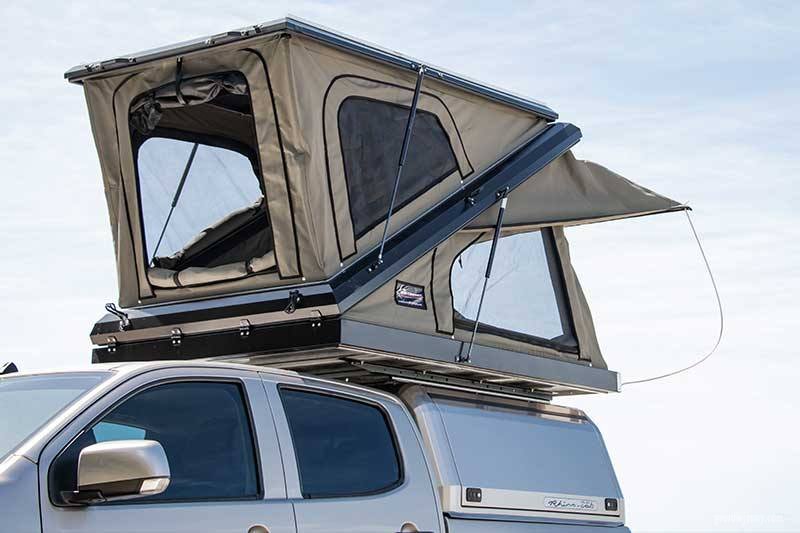
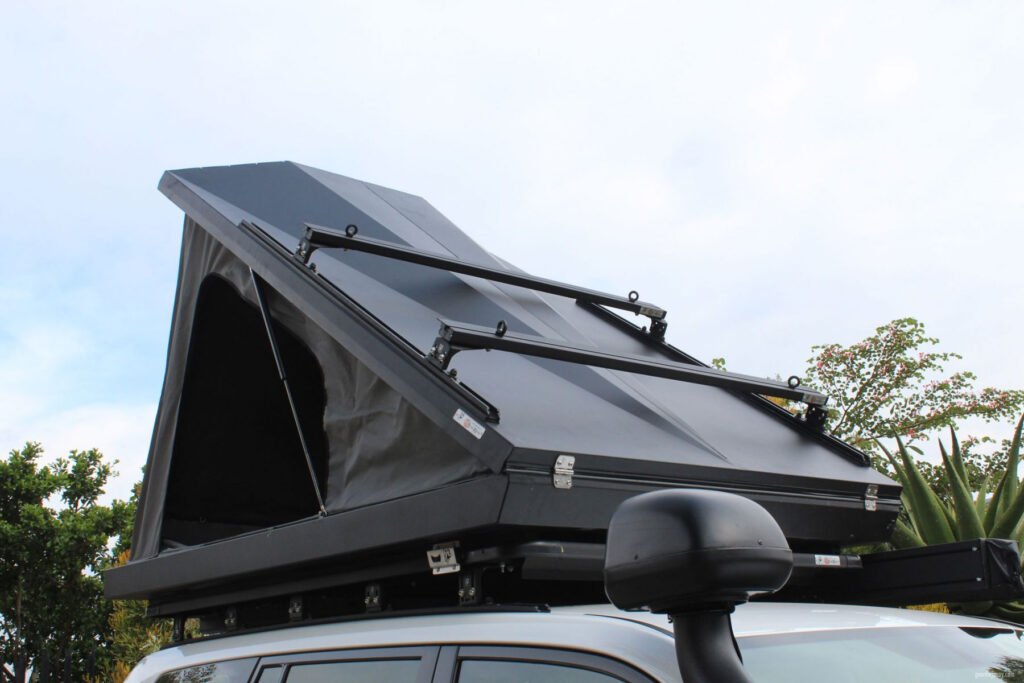
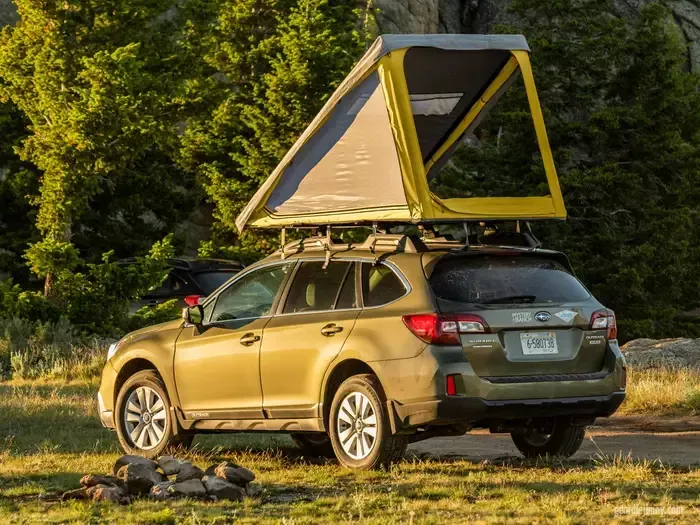
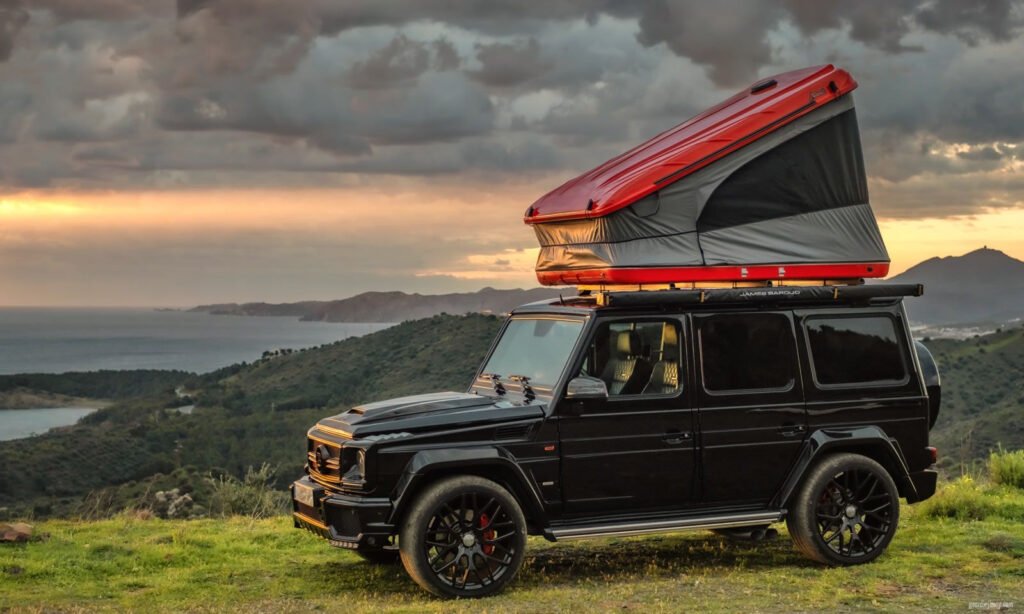
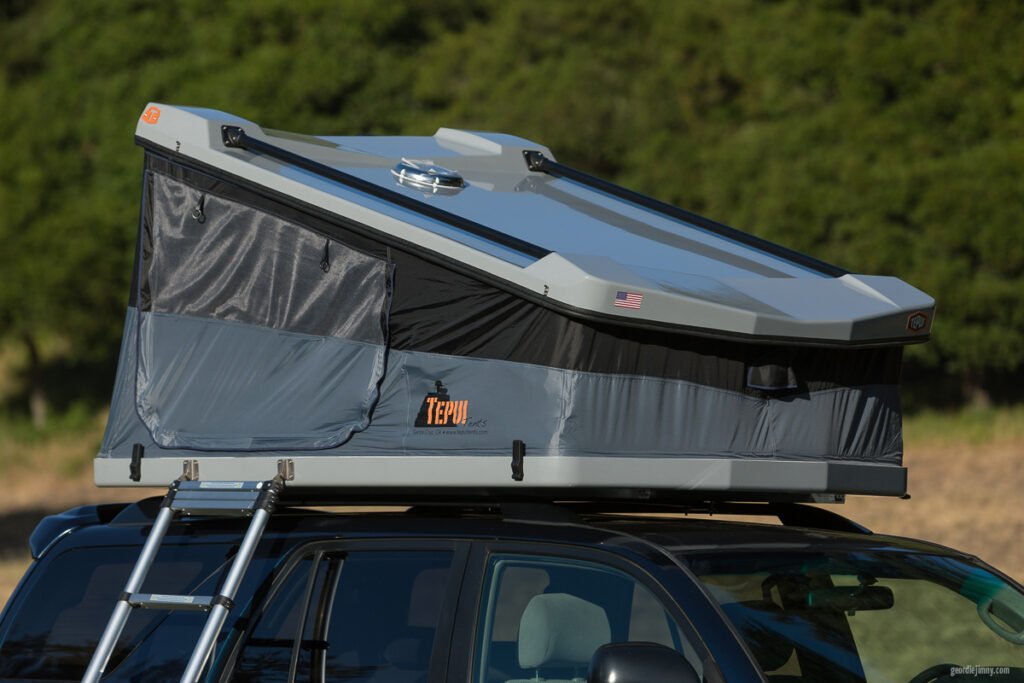
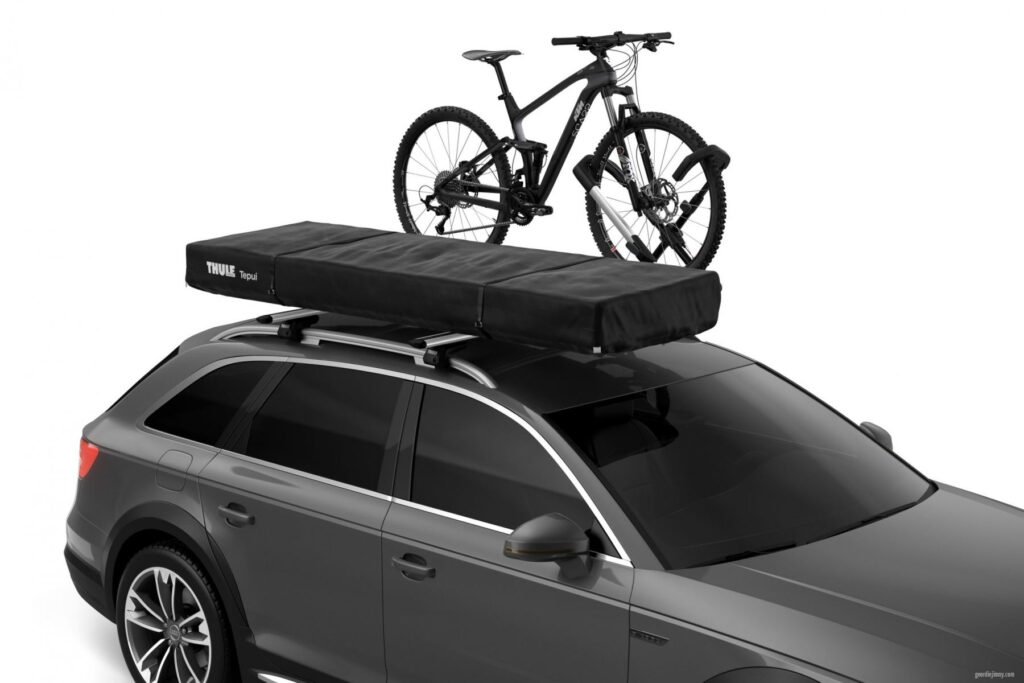
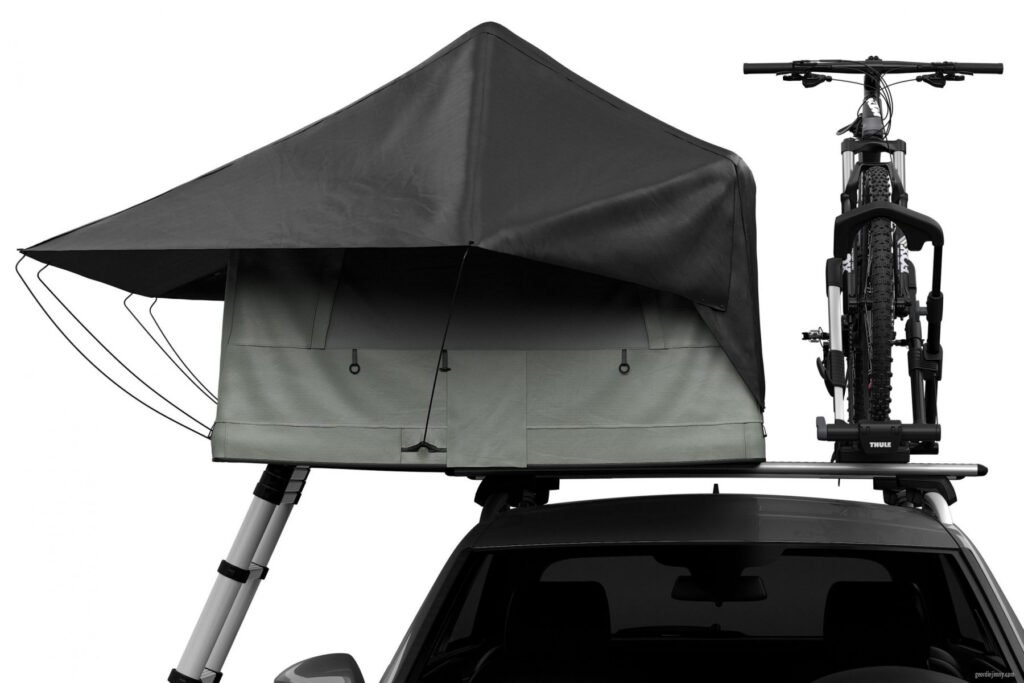
Skills at my disposal
Having watched countless hours of DIY roof tent videos on YouTube, product reviews and browsing online it doesn’t take long to realise I’m missing multiple parts of the jigsaw if I plan to make the worlds lightest weight roof top tent:
- Fabrication skills
- Product design experience (I’m an app designer)
- Engineering skills
- etc
Perhaps I have the corners of the jigsaw and a lot of enthusiasm. That’ll have to do.
So with all that reality crashing down, I’ve accepted that there isn’t a huge innovation I can bring to the party (least not yet) in respects of the materials used, design style and shape. Welding titanium tubing, making my own carbon fibre parts, or any form of skilled work proper blokes do for a living is out of reach.
The project goal of weight reduction proving to be more challenging than I expected.
What I can do is obsess over a design ideas until the cows come home. I have a small amount of knowledge in how to use Fusion 360 to mock up designs. Sometimes a lack of experience means you try things smarter people wouldn’t dream of so all is not lost. Failure of a design is fine by me.
The style of tent I’ve chosen
It’s probably obvious from the images above we are going with the wedge style tent.
The set up and tear down times are by far the fastest. The design is relatively straight forward, unless I wanted to get fancy with it, which I don’t. I want a basic no frills tent so this makes the most sense.
Before I forget, look at this head turner from Redtail Overland! She’s a heavy thing of beauty 🙂 10/10 design.


Design influence and prototype plan
The plan is to prototype bottom up. Starting with the lightest weight configuration I can feasibly attempt, adding supporting structures and increasing the strength where the design fails.
It might sound crazy but the first prototype to try is an aluminium frame with an entirely softshell tent. This bring us to the first inspiration project.

A clever design taking inspiration from watching sailors sleeping inside a boat during a race. Made from a lightweight aluminium frame with waterproof sailing fabric that seems to be made tight by some sort of rope system.
I’ve sourced several sample materials to begin testing this concept of a soft-shell, almost hammock style inner tent.
I appreciate it doesn’t meet some of the project goals I’ve set earlier, in particular protection from wind and the option of adding insulation when needed. However, I’m not limited to one set up style, in theory I could have a spring/summer and autumn/winter configuration.
That’s a concept I’d like to explore, a modular style roof tent that changes with the seasons. Remember I’m not overlanding or needing the tent to be a long-term habitat. A weekday, rather than weekend warrior style product is sufficient.
The next big inspiration that helps remove some pitfalls of the lack of skills and my disposal is constructing the frame using aluminium extrusion. By far the best playlist of videos I’ve watched is by:
His YouTube series on building his own DIY roof tent is what gave me the confidence sell the front runner tent beforehand instead of afterwards. That’ll help cover some costs for the various ideas to try out.
He’s done a grand job of this project the sewing skills are next level. I think it turned out perfect, the only problem for the Jimny is it’s too heavy for the cap I’ve set.
Experiments to try
As soon as a prototype easily supports my body weight and securely mounts to the vehicle I’m going to press pause on the remaining experiments. So the best plan is to work through experiments in the order of what delivers the lightest weight end product.
Aluminium Extrusion Frame
The frame constructed by Headway Drive Overland isn’t quite a low weight as I hoped it would be. I’m going to attempt to build a frame design that uses less material. I’d say there’s a chance I can make some gains in reducing the frames weight with some experimentation.
Where I don’t need load bearing capacity I’ll utilise lighter weight aluminium extrusion profiles and hardware brackets.
I’ll add supporting beams (not sure if that is the correct terminology) where needed and attempt to create a frame that is strong enough to hold ~90-100kg.
I’d like to try a frame that is as low profile as possible and will start with 30/30 and 30/60 extrusions.
Tent Base
Once a suitably strong frame is completed I’ll experiment with the softshell design base. If I can produce a tent floor using strong canvas or nylon stretched with enough tension inside the base frame that it doesn’t sag, I think this could be a brilliant way to reduce the overall weight. I have samples of various rigid materials on their way in case this test fails to produce the desired results.
Out of all the experiments to keep the weight low I hope this one works out. I use a good quality insulated inflatable mattress so a rigid floor from and insulation perspective isn’t a priority. A rigid floor and it’s subsequent increase in weight might be avoidable.
If the softshell tent base fails to deliver I’ll move to experimenting with different rigid base materials. Thicknesses and supporting structures. I’ll even attempt to take influence from bed slats to see if there’s any weight gains to be achieved while retaining the correct amount of support by sewing a soft-shell base with pockets or supporting slats.
Tent Roof
For the roof I’ll start with a softshell design ensuring a water tight, taught fit. The key areas to test is its ability to handle strong winds, wind noise and whether it bulges upwards while driving (don’t want it flapping insanely). Removing the straps from my front runner tent cover results in the cover ballooning upwards at speed. I need to make sure the low profile of the tent remains that way. This won’t be an issue with rigid panels of course.
I’ve got this grand idea of having an entire roof act as a skylight with the sides of the tent providing the privacy. After a few whiskeys, lying there looking at the stars then waking at first light sounds like the perfect camp to me.
Therefore, even if the soft-shell roof works I do plan to make a hybrid roof from both waterproof hardshell panelling and light weight tent material. The plan is to use a clear glass style Polycarbonate or Acrylic outer shell on the roof with a three quarter length zipped inner blackout tent material. There is also clear waterproof PVC material but I suspect the visibility through this is will be warped. Let’s test it out.
Tent walls and entrance
The Redtail tent design is amazing but it’s obviously not going to give me the weight reduction benefits.
The plan is to experiment with different tent materials ordering samples of various thicknesses and settle on whatever gives the most protection from the elements with the lowest impact on weight possible.
Starting out with no windows or bug nets the tent walls will also go through iterations while I balance any weight gains with features that are A MUST.
To be brutally honest with you I’ve never lay looking out the windows in the Front Runner Tent. After the initial novelty wore off I’ve literally only gone up there to sleep and zipped the whole thing closed instantly.
If not for videos where I like to open the tent to show the early morning view. I questions whether I need side windows? I just get dressed and exit the tent. There’s what I need for real life and what’s needed for the perception of a cool video. I hope you see where I’m going with this, I’ve been guilty of helping sell the dream. For me it’s somewhere to sleep, simple as that. It’s not a dreamy romantic experience social media portrays. Sexy tanned legs and ass lying on a plush blanket. Usually you are speed dressing then get out asap for a coffee as it bastard freezing. Not to mention the fact you’re desperate to pee. Maybe I’m doing it wrong, comment if you chill out in your roof tent, whiling the hours away. Looking up at the star at night is something I like. Unfortunately the Front Runner tent never allowed this.
Depending upon the design in earlier stages of the experiments the inner tent may need to be totally self contained to be fully waterproof. If the softshell style base approach works to support the weight it’s going to be one hell of a challenge to sew the entire tent. I do have some ideas to make it easier though, no guarantees they’ll work though.
Note that the custom rainfly was made on my literal 2nd time using a sewing machine so this part of the project makes me a bit skeptical I’ll pull it off. I end up making something of course but whether it’s going to stand the test of time we’ll have to wait and see.
Regardless, nothing needs to be perfect. It’s not like I can’t make replacements when they’re needed. Improving the design weeks or months down the line. Or simply making the same thing better with practice.
Frame Coating
I can’t find any aluminium extrusion suppliers in the UK for the sizes I need in anodised black. I suspect it’ll scratch like crazy anyway. We’ll have to buy silver extrusion then try to paint or coat it.
Raptor coating the final frame seems a good thing to try. It’ll protect it much better. I’m a little concerned of the weight increases so I’ll have to test that out, comment if you have ever raptor coated aluminium. I’ve seen the process I need to go through (pain in the ass). Or I throw some money at getting the frame powder coated. That will be expensive though, especially in the UK.
Design preview
Ideas are worth nothing without successful execution so I don’t mind sharing as I progress with the project. Here’s a link to the 3D render of the base design I’ve been playing with. It’s not the final design but fun to spin around.
Next blog
Over the next week I plan to build the frame out of wood to make sure I get the sizing right then I’ll order the aluminium extrusion.

Fantastic read????????✨
Cheers from JimnyCph✌????
Cheers for reading buddy! Hope you’re well 🙂
Great to hear about the project mate!
Regarding the soft shell floor, I have no experience on the subject but it feels that most canvas will sag with time and, as it is important to keep the tent as close to the roof as possible, it would be hard for the floor not to touch it. Perhaps nylon would work better, if the aluminum frame withstands the tension required to keep it stretched. It would have to be a very strong kind of nylon thread, rip-stop like, or else any small puncture could become a huge cut under a tensioned fabric.
Have you considered a hardshell floor made with a sheet of metal? If you make it corrugated it might become strong enough (then maybe fill the depressions with high density foam to make a plain surface) with minimal thickness for a lightweight build. Some car panels get lines or corrugations so they can be more resistant to bending or getting dented.
Hi mate yeah that’s the problem to solve sagging. I’ve got some nylon fabric that’s just arrived and it looks like a good candidate for a test.
Trying to avoid any metal flooring if I can. There’s a few other materials to try if the softshell flooring is a dead idea!
Fun to find out, looking forward to getting the frame design finished and built to begin the flooring tests.
Appreciate the advice I’ll explore what you’re suggesting, they’ll be a combination of ideas that work out I bet ????
Cheers
Paul
Hello ! J’essayerais avec un plancher sandwich Stirofoam, tissu et résine époxy inclus dans un cadre en sapin. Bonne journée.
Bonjour, j’ai fini par utiliser de la fibre de carbone! Fonctionne très bien mais c’est cher.
Sounds again like a wonderful project! Pretty impressive!
Regards, Heinz
Let’s hope it is successful. 🙂
G’day from Australia mate!
Awesome blogs mate, love reading them. One thing I can’t see mentioned in anything published- have you ever considered a small camping trailer to tow? These little beauties stay under the 1300kg towage capacity.
https://www.caravancampingsales.com.au/editorial/details/new-kings-bush-camper-from-12k-126547/
Please delete this comment… I kinda feel my previous one wasn’t appropriate with your awesome prototype article.. which looks absolutely wicked… but didn’t know where to ask it, so apologies man!
All good mate!
Yeah I’ve seen a few JIMNY’S pulling trailers. I’d love one but two limiting factors are price and space to store it. Maybe one day. Might try hiring one for fun sometime if there’s any companies in The UK that do compatible ones.
If money was no object I’d get the Mink Trailer it’s so nice!
Yeah wow man they look mental! And yeah fair call about storage and $$$.. well pounds in your case 🙂
Australia is way better for products like that than the UK can ever hope to be. Saying that It’s worth following this trailer build in SA https://youtu.be/owW3Vy_IRcg some good info mate.
Cheers
Paul
Good on them, cool little beast!